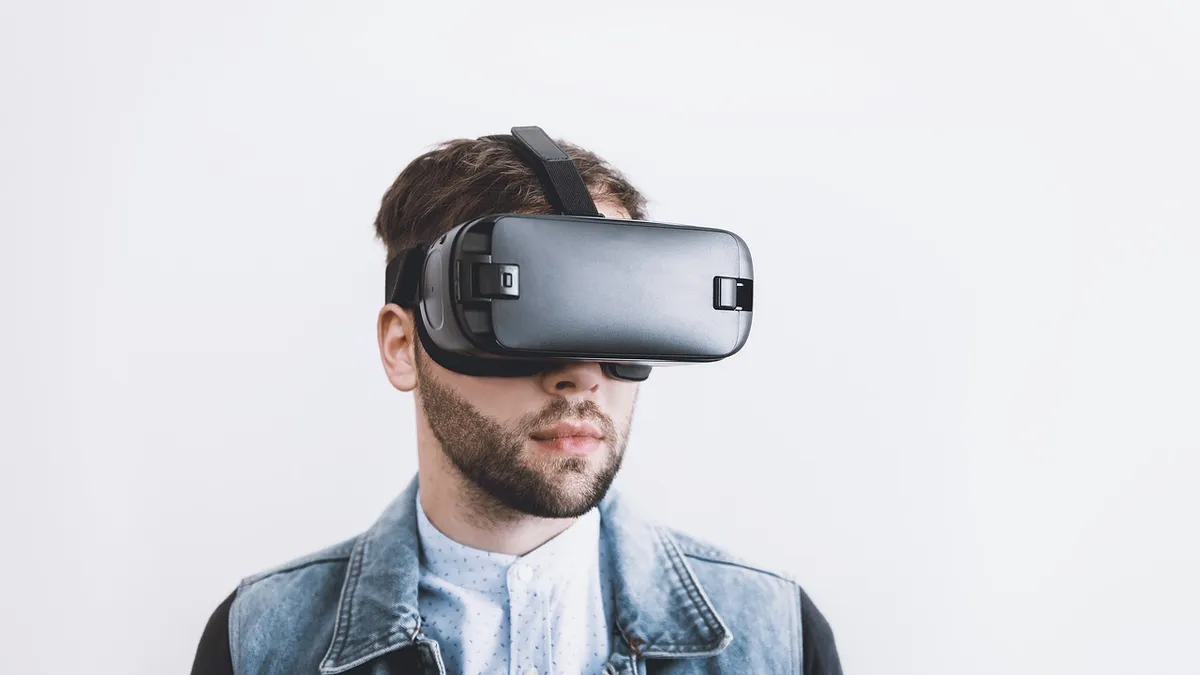Virtual reality and related technologies are gaining momentum in the employee learning field. Trainers love these tools for their ability to create an authentic learning experience in a safe, controlled environment and employees say they're on board, too.
But what exactly are these technologies? What do they do and how can you make use of them in your workplace? For many, understanding the tech is the first step toward implementation.
Alphabet soup
All together, these tools fall under the umbrella of XR — extended reality — according to Jack Makhlouf, Talespin's VP of sales and licensing, enterprise learning.
Within XR is VR and AR, virtual reality and augmented reality. To add to the confusion, AR is sometimes called MR, or mixed reality, Makhlouf told HR Dive in an email.
Essentially, VR is a simulated experience that transports the user to a virtual environment that can be similar to or completely different from a real-world scenario. AR is an interactive experience where the objects that reside in the real world are enhanced by computer-generated information.
IRL application
VR and AR have many real-world applications, according to Ravin Jesuthasan, managing director, talent management at Willis Towers Watson. "VR and AR have gotten increasingly popular for training people on scenarios that don't occur often (e.g., a store manager being taught how to deal with an armed customer) and for training people on things that require significant practice (operating a complex piece of machinery)," he told HR Dive via email.
As a result, they're fast becoming a safety training must-have, especially for distributed workforces. These tools can be used to familiarize workers with a risky procedure or process before they attempt it in real life, Concept3D's CEO Gordon Boyes wrote to HR Dive. For location training, staff can learn safety procedures or the locations of exits, eyewash stations or fire extinguishers. "We use AR or mixed reality for remote locations," Boyes said, "and can overlay relevant data or information in its correct location without having someone needing to go to the remote site."
VR training scenarios also are particularly useful for practicing workplace conversations, Makhlouf noted. Workers can test run negotiations or customer interactions. "People generally don't get enough real-time practice engaging in difficult conversations so it takes much longer to build competency," he said; these tools can allow trainees to practice scenarios where soft skills are critical before being thrown into real-life situations.
Moreover, trainees are free to fail, get feedback, retry and improve with little judgment or consequence, Makhlouf said: "They are free to stretch their skills and gain a higher level of learning — that is the real power of this technology."
The ROI
While costly, Jesuthasan said, VR and AR have major benefits. For one, the speed of training on highly complex topics is unprecedented.
Additionally, the tech boosts knowledge retention because people are visual learners, Boyes said. "An employee's ability to learn and retain information is greatly enhanced with the addition of immersive media." The self-directed nature of the training can result in a cost savings, too, Boyes added.
XR training programs tend to be scalable as well, Makhlouf said, which can make it more cost-efficient. But ultimately, employees seem to like them, and that's perhaps the best return on investment an employer could hope for. After all, if you can't get employees to complete training, there's no ROI at all. "[W]e believe training should effective, cost-efficient, and measurable," Makhlouf said, "but most of all, fun.”













